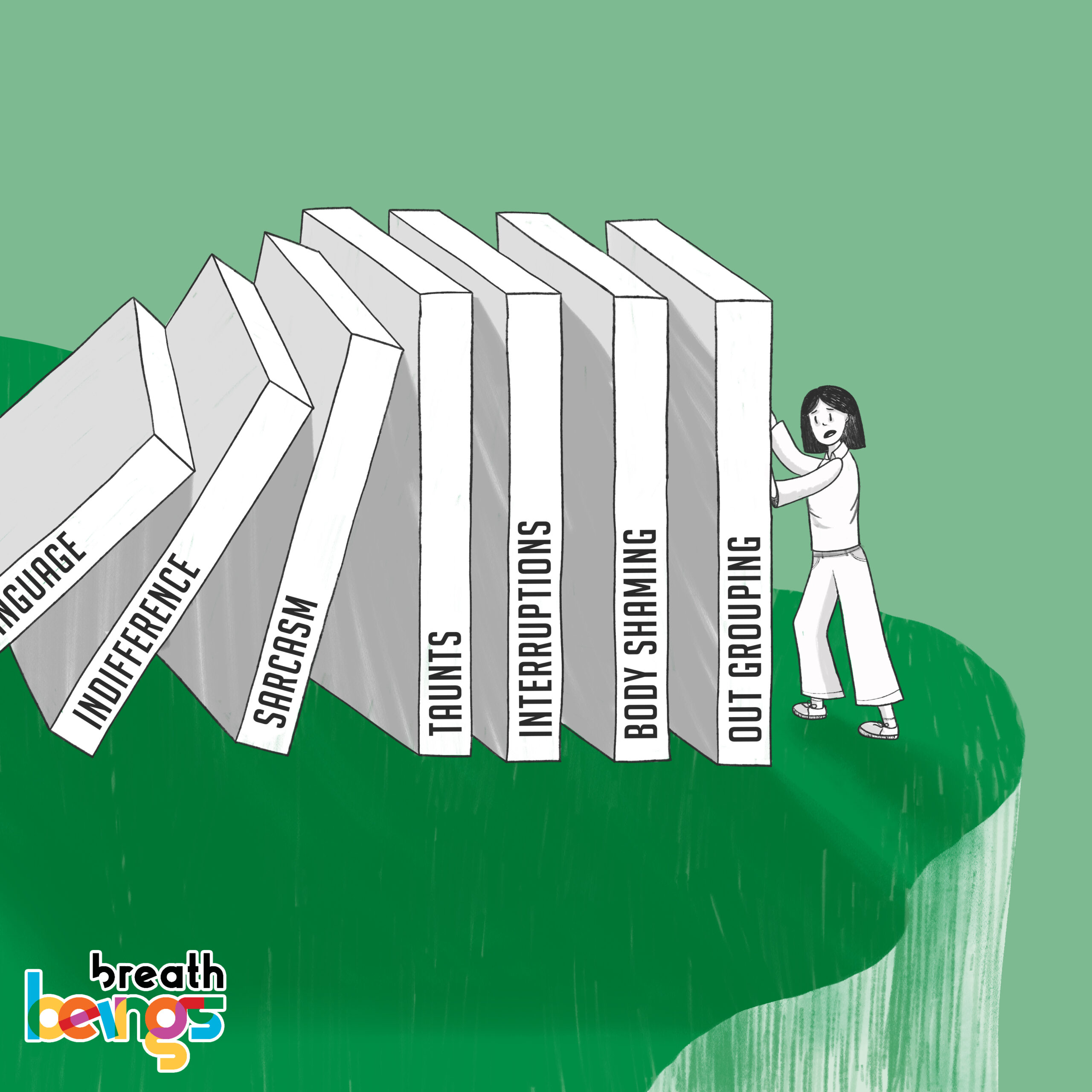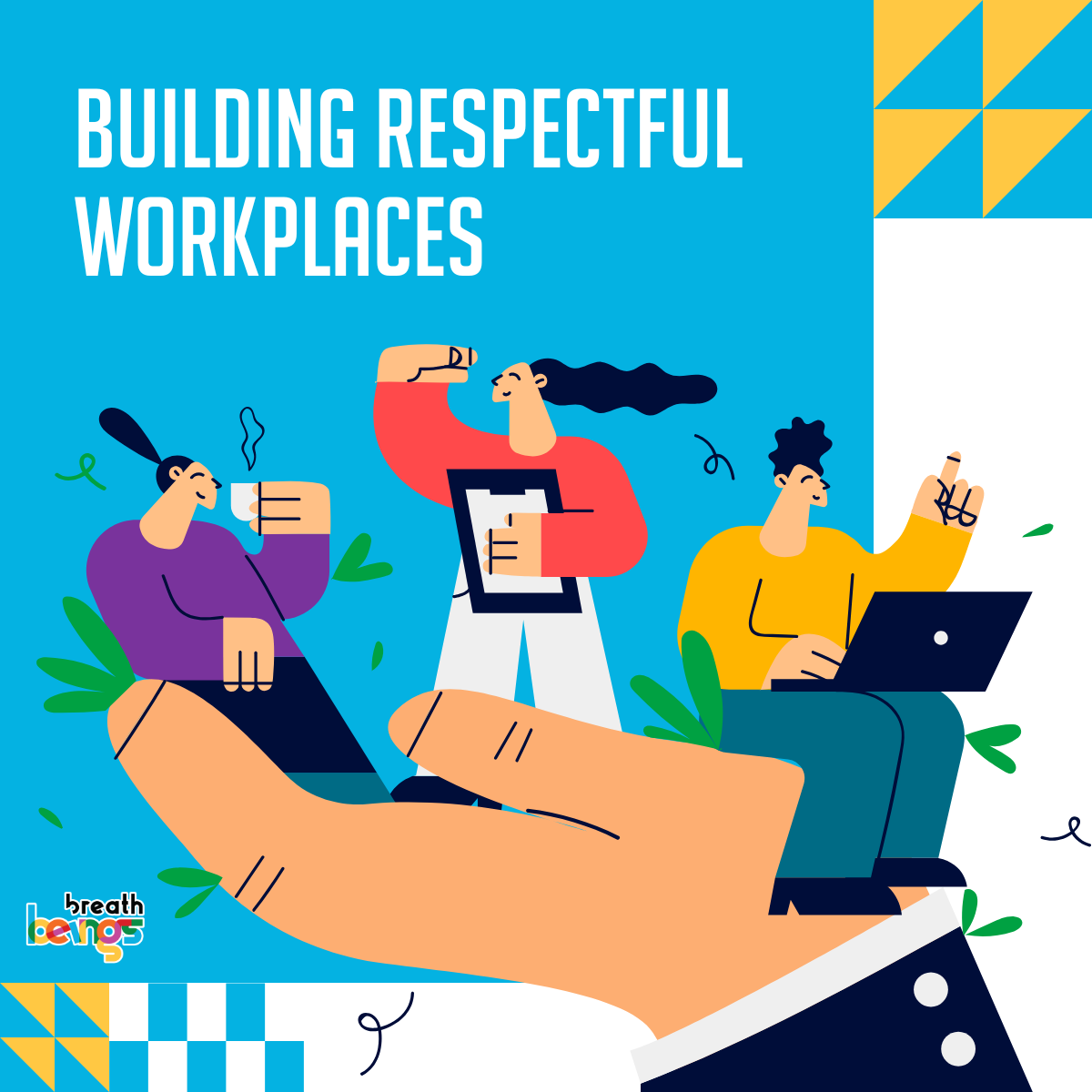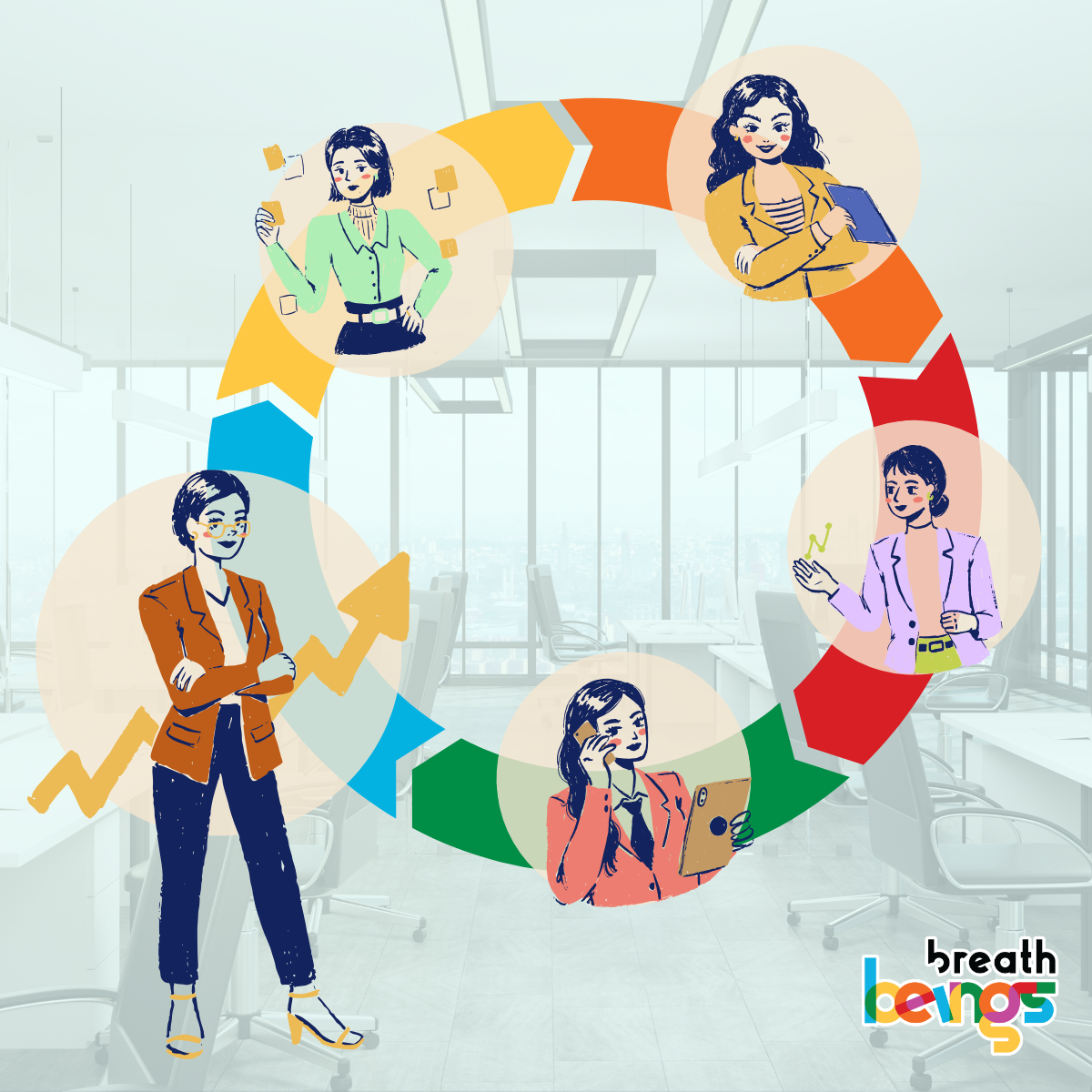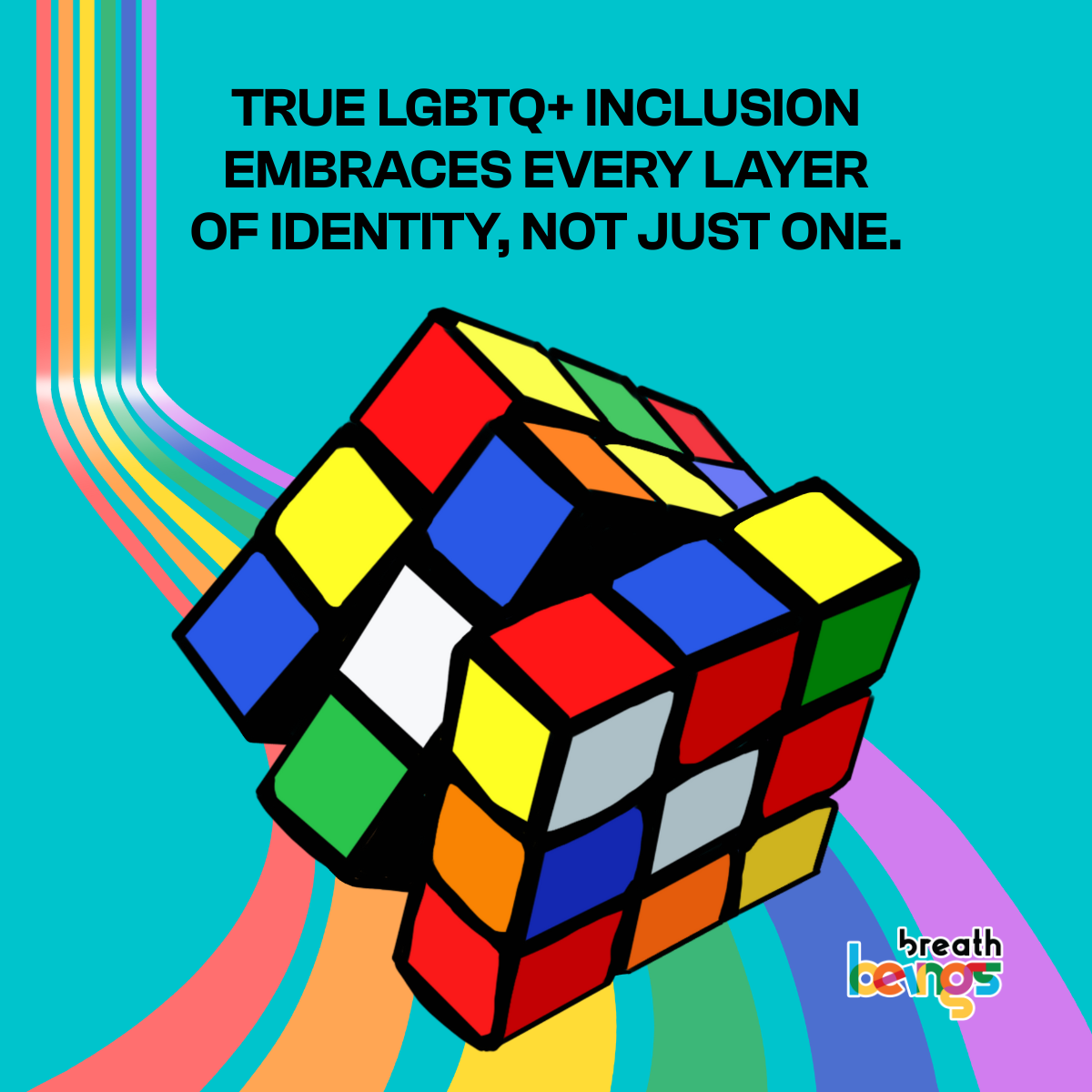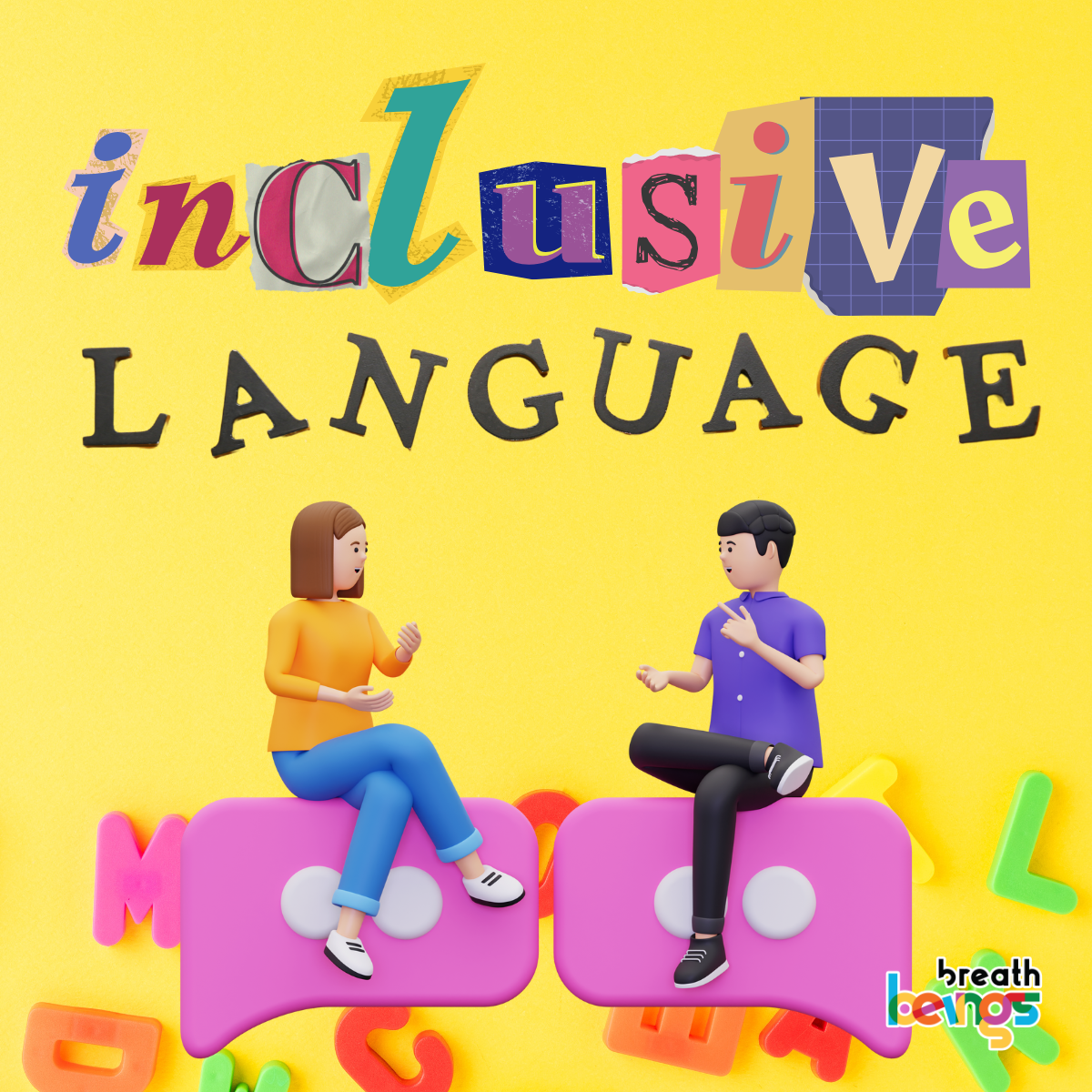What's the first image that comes to mind when you hear the word aggression?
Someone yelling? A screaming match?
The Oxford Dictionary defines aggression as ‘feelings of anger or antipathy, resulting in hostile or violent behavior.’
The keyword?
‘Hostile or violent behavior.’
But not all aggressions come with hostile or violent behavior.
Sample these conversations...
Lina: I just finished that report on the new product launch.
Anshul: Oh, no wonder you look tired! Did you get a chance to do your hair?
Monica: I’m going to the conference next week to represent our team.
Rajeev: Springing for extra baggage space, I hope? I know how women love to shop!
Do they appear ‘aggressive’ as per the Oxford Dictionary definition?
They pass through you so casually that you may not even notice it. And if you do, you may be labeled as ‘being too sensitive.’
Gendered jokes, tokenism, being talked over, comments on appearance, and more are all common occurrences. And they are minute. What we call as microaggressions. They don’t result in violence. But these everyday slights, put downs, and insults can take a toll.
Research backs it up. At least 44% of women say they have experienced microaggressions in the workplace in a 2023 Deloitte report. Sixty-eight percent of people assume that a conversation between two women is a personal chat.
And it’s not just women who can be at the receiving impact of microaggressions. People of color. People from the LGBTQ+ community. People who are neurodivergent. The marginalized sections of our society can experience microaggressions.
So what exactly are microaggressions?
Understanding microaggressions
The American Psychological Association (APA) defines microaggressions as “commonly occurring, brief, verbal or nonverbal, behavioral, and environmental indignities that communicate derogatory attitudes or notions toward a different “other.”
Psychiatrist Dr. Chester M. Pierce coined the term microaggression in the 1970s, but it was psychologist Dr. Derald Wing Sue who brought it back into modern consciousness and also outlined the 3 types of microaggressions that can occur:
- Microassaults: discriminatory actions that are deliberate and done with purpose, like racial insults
- Microinsults: subtle remarks undermining and devaluing a person’s identity
- Microinvalidations: excluding a person unintentionally by not recognizing their feelings or thoughts
Microaggressions can be verbal or non-verbal, intentional or non-intentional, behavioral and environmental.
In India, microaggressions are extremely common and marginalized communities face hostilities daily in every form.
“You’re a credit to your caste.”
“I didn’t expect you to be so good at English.”
“Why are you getting so angry? Are you on your periods?
While none of them are overtly violent or abusive, they are implicit in their bias and discrimination. They come from assumptions and long-held patriarchal beliefs against social markers deemed to be ‘different’ or ‘not normal’.
But with microaggressions often being subtle and unintentional, how do you recognize if you’re committing one in the first place?
Many people are unaware of their own deep-rooted assumptions and biases that are most often a result of their upbringing. It all starts with self-awareness. The first step would be to ask questions of yourself to know what your deep, dark biases are. Recognize that even comments with the best intentions can hurt and demean someone by reinforcing stereotypes.
However, do microaggressions really have a tangible impact?
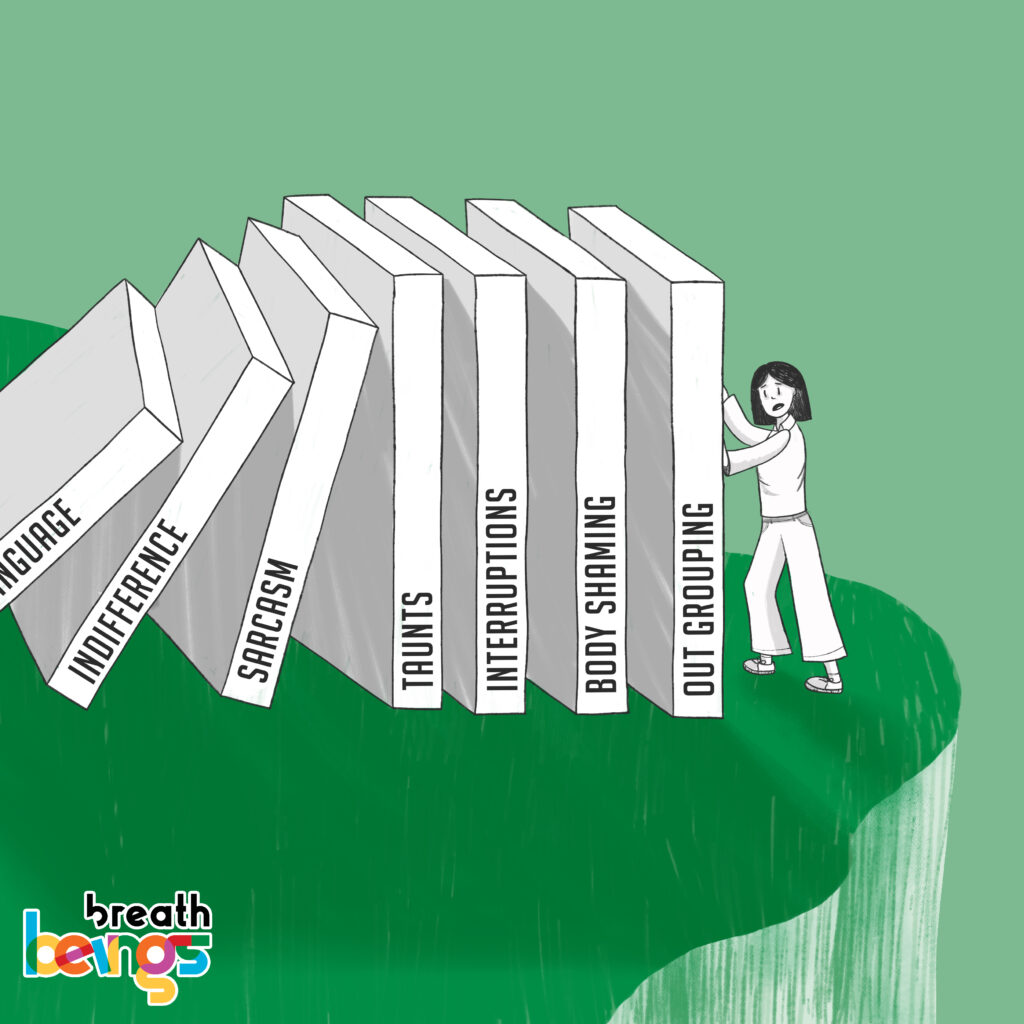
Why microaggressions need to be addressed
Yes, microaggressions can have a negative impact on mental health and overall well-being. A study from the National Library of Medicine showed that an environment filled with microaggressions has an adverse effect on sleep and increases suicidal thoughts. An Adecco report reveals that 40% of employees would like their employer to create a culture of trust, and 36% would love to have their company prioritize inclusivity.
Without trust and a feeling of belonging, the workplace can become a toxic environment and productivity takes a hit. Microaggressions can take a toll on emotional energies, morale, and cognitive abilities, lowering an employee’s capability to perform at their full potential. And apart from other factors, microaggressions could be playing an important role in causing dissonance, lack of engagement and ultimately, attrition at the middle management level.
Creating inclusive societies and equal opportunity workplaces require these thousand little cuts to be recognized and addressed.
How to address workplace microaggressions
To move the needle from microaggressions to acceptance, every employee and the leadership needs to take ownership. And a truly inclusive workplace begins with being responsible for self-education. Individually, you can get started by
- Reading up and understand what constitutes microaggressions
- Reflecting on your personal biases and attitudes
- Practicing active listening and be open to others’ perspectives
- Staying informed on evolving social issues and changing cultural fabric
Self-awareness is the first step towards instigating positive change at the organizational level. Inclusion and a sense of belonging are critical ingredients of a thriving work culture where employees feel psychologically safe. This is where leadership needs to be hands-on and demonstrate inclusivity as a company value.
Here are 5 ways in which organizations can be more inclusive:
#1 Introducing training programs
Training programs custom designed for workplaces provide individuals with an opportunity to reflect on microaggressions they might have committed. Professional training usually includes information on the impact of social exclusion and health outcomes and is aimed at increasing awareness of one’s own biases.
#2 Women leadership acceleration programs
Implement women’s leadership development programs to support women with having a strategic and confident response to the specific microaggressions they face in the workplace. Such programs can help women discover what is important to them, and empower them with agency. These programs have the power to create strong female talent pipelines creating leaders with high potential, building diverse teams and undeniably creating a significant business advantage.
#3 Anonymous reporting mechanisms
Establish anonymous channels for employees to report instances of microaggressions without fear of retaliation. Outline clauses and definitions to ensure that reported incidents are investigated promptly and thoroughly.
#4 Cultural competence training
Provide training on cultural competence and sensitivity to help employees better understand and appreciate diverse perspectives. Employees can be made aware of accepting diverse beliefs, including people from different backgrounds, and demonstrating mindfulness and humility.
#5 Frequent workplace climate surveys
Conduct regular surveys to assess the workplace climate. Consider factors like job satisfaction, leadership cohesion, organizational commitment, and discrimination of any type, among others. Collecting feedback on overall diversity and inclusion efforts can give you an on-the-ground peek into the reality of your workplace and enable you to make informed improvements.
We can shape an inclusive future
“In the future, there will be no female leaders. There will be just leaders,” said Sheryl Sandberg in her TED Talk.
Moving gender diversity from being a mere checkbox on board meeting agendas, reducing social exclusion based on culture or identity, stepping up for colleagues on the margins, intervening when you see instances of microaggressions, and addressing workplace mental health are just a few items that organizations can start with.
India Inc has a mission when it comes to inclusivity and diversity. And the future that Sandberg dreams of can be ours right now should we choose to accept.
